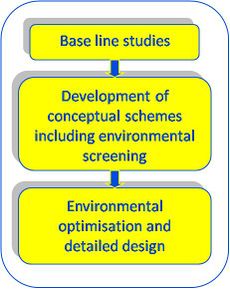Difference between revisions of "Template:This weeks featured article"
(Undo revision 19887 by Wouter Kreiken (Talk)) |
|||
| Line 1: | Line 1: | ||
| − | == | + | ==How to apply models== |
| − | + | [[Image:how to apply models schematic_5.jpg|thumb|right|230px]] | |
| − | + | ||
| + | Numerical models have reached a level of accuracy and detail over the past 25 years that most of the dominant processes in the coastal environment can be quantified. However, the numerical models are tools only for the coastal engineers and planners. This article on ''How to apply models'' will discuss the optimal use of the modelling tools at various stages of a coastal development project. Further, examples are given of projects where proper analysis and modelling have formed the basis for successful coastal projects. | ||
| + | |||
| + | ==Introduction== | ||
| + | The description in this article will concentrate on development of high quality and safe artificial beaches, as these are often one of the most important assets of coastal development schemes. It is recommended that the planning of a coastal development scheme includes the following coastal engineering disciplines: | ||
| + | *Baseline studies | ||
| + | *Development of alternative schemes | ||
| + | *Detailed design and environmental optimization | ||
Revision as of 13:02, 10 March 2008
How to apply models
Numerical models have reached a level of accuracy and detail over the past 25 years that most of the dominant processes in the coastal environment can be quantified. However, the numerical models are tools only for the coastal engineers and planners. This article on How to apply models will discuss the optimal use of the modelling tools at various stages of a coastal development project. Further, examples are given of projects where proper analysis and modelling have formed the basis for successful coastal projects.
Introduction
The description in this article will concentrate on development of high quality and safe artificial beaches, as these are often one of the most important assets of coastal development schemes. It is recommended that the planning of a coastal development scheme includes the following coastal engineering disciplines:
- Baseline studies
- Development of alternative schemes
- Detailed design and environmental optimization
